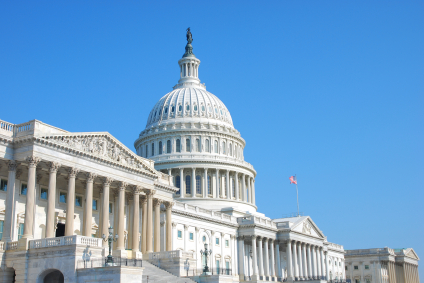
Congress should use a rare political moment to improve the U.S. regulatory process.
Although regulations affect every aspect of our lives, they rarely reach the attention of voters (and consequently of elected officials) because, unlike their spending cousins, their effects are often not visible. Like the direct government spending that is supported by taxes, regulations are designed to achieve social goals, but the costs of regulations are hidden in higher prices paid for goods and services and in opportunities foregone.
Over the course of American history, concerns about the effect of regulations have occasionally reached a level of public discourse that led to meaningful efforts at regulatory reform and even outright deregulation. We may have reached such a point now, with the executive and legislative branches discussing reforms to regulatory procedures and decision criteria.
In the procedural reform category, members of Congress have introduced or are considering intriguing approaches to change the current incentives that lead to ever-increasing regulation. The REINS Act (H.R. 10 and S.299) would require a congressional vote before major new regulations can become effective. If passed, it would have the benefit of making not only legislators but presidents more accountable for the content of major new regulations. On the other hand, it may reduce regulatory transparency, limit judicial review, and alter agency incentives in unintended ways.
Senator Mark Warner (D-VA) plans to introduce “regulatory PAYGO” legislation where, for every new regulation issued, agencies would have to remove an equivalent burden from regulations already on the books. While this poses analytical challenges, a regulatory PAYGO system has the potential to impose needed discipline on regulatory agencies and generate a constructive debate on the real impacts of regulations.
Other ideas under consideration include procedural amendments to the 65-year old Administrative Procedure Act to improve how public comments are received and evaluated, as well as amendments to apply the “substantial evidence” standard of judicial review (in lieu of the arguably less demanding “arbitrary and capricious” standard). Members of Congress are considering requiring the use of formal rulemaking procedures for the most significant regulations; for example, the Creating Sunshine, Participation, and Accountability for our Nation Act (H.R. 1432) would require all rulemakings under the health care reform law to include a formal on-the-record hearing.
Congress may also consider providing for judicial review of data and analysis relied on by agency decision makers in rulemakings by expanding the Information Quality Act. The Regulatory Flexibility Act (RFA) could be amended to provide for judicial review of agency estimates of indirect regulatory effects (S. 474, H.R. 527).
One bill (H.R. 214) and other drafts under consideration would establish a congressional office to review and evaluate agency regulations. This would be particularly important if Congress enacts some of the other procedural changes being discussed, such as the REINS Act or a regulatory PAYGO system. Just as the Congressional Budget Office provides independent estimates of the on-budget costs of legislation and federal programs, a congressional regulatory office could provide Congress and the public a source of independent analysis of the likely off-budget effects of legislation and regulation.
Congress is also considering several bills that would build upon the requirements endorsed by every recent president, including President Obama, to affect the criteria upon which agencies make regulatory decisions. Some would codify the requirements currently embodied in executive orders that agencies examine both regulatory costs and benefits, and would extend these requirements to independent agencies (S. 358, S. 602). Others would expand the coverage of existing statutes, such as the Unfunded Mandates Reform Act (S. 817, H.R. 214, and H.R. 373) and the RFA (S. 474, H.R. 527).
Congress will need to decide whether a cross-cutting legislative requirement that agencies consider both benefits and costs would supersede the decision criteria expressed in individual statutes, such as Section 109 of the Clean Air Act which has been interpreted to prohibit the administrator of the Environmental Protection Agency from considering economic costs and other tradeoffs when setting air quality standards.
Regardless of how Congress resolves that issue, a major advantage of codifying the analysis requirements found in executive order would be the ability to apply these requirements to independent agencies, something that Presidents have been reluctant to do through executive order for fear of stirring up debate over their relationship with independent agencies. Through codification, Congress could also make compliance with analysis requirements judicially reviewable, something that does not exist under the current executive orders.
Today, regulation is at the forefront of the political agenda, with members of Congress proposing a variety of changes to the procedures for promulgating regulations and the factors for agencies to consider when deciding between regulatory alternatives. President Obama has also called for removing “outdated regulations that stifle job creation and make our economy less competitive.” With both the executive and legislative branches motivated to reduce regulatory barriers to growth and investment, it is hopeful that one or more of the ideas percolating for constructive regulatory reform will be adopted.




